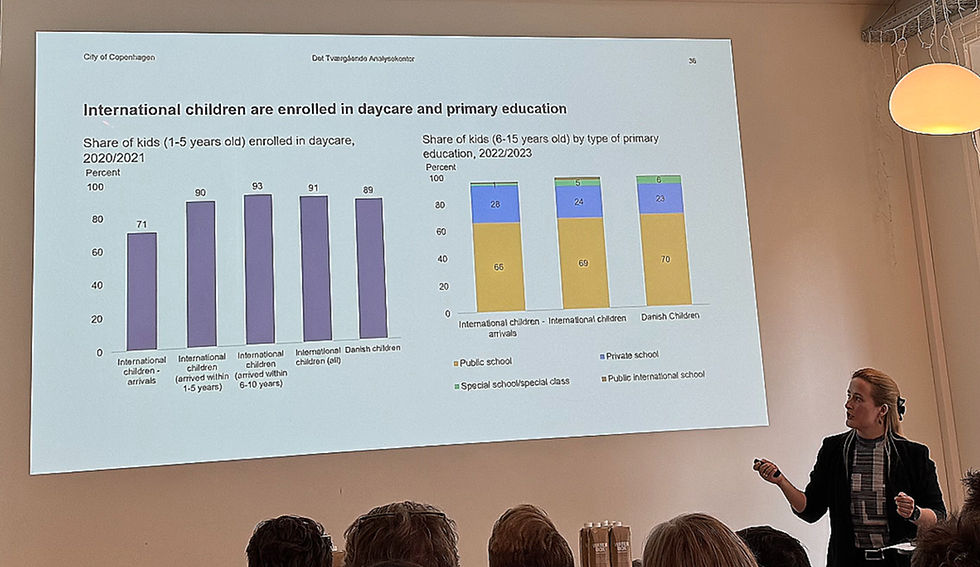Revolutionizing Customer Experiences with Service Design
- Gizem Tore

- Jul 28
- 4 min read
P.S. This article was 100% AI-generated as part of an SEO and content experiment. While it may offer insights, please approach it with critical thinking. In today’s fast-paced world, businesses must continuously evolve to meet customer expectations. One of the most effective ways to do this is through service design. Service design focuses on creating seamless, meaningful, and efficient experiences for customers by carefully planning and organizing people, infrastructure, communication, and material components of a service. This approach is revolutionizing how companies interact with their customers, leading to higher satisfaction and loyalty.
How Innovative Design Projects Transform Customer Experiences
Innovative design projects are at the heart of modern service design. These projects use creativity and strategic thinking to rethink traditional service models. By doing so, they help businesses identify pain points and opportunities for improvement in the customer journey.
For example, a retail company might use innovative design projects to redesign its checkout process. Instead of long queues and complicated payment methods, the company could introduce mobile payment options and self-checkout kiosks. This not only speeds up the process but also enhances the overall shopping experience.
Another example is in healthcare, where innovative design projects can streamline patient check-ins, appointment scheduling, and follow-up care. By integrating digital tools and personalized communication, healthcare providers can reduce wait times and improve patient satisfaction.
These projects often involve cross-functional teams, including designers, marketers, IT specialists, and frontline employees. Collaboration ensures that every aspect of the service is considered, from the initial customer contact to post-service support.

Key Benefits of Implementing Innovative Design Projects
Implementing innovative design projects offers several tangible benefits for businesses and customers alike:
Enhanced Customer Satisfaction: By addressing customer needs and pain points, services become more user-friendly and enjoyable.
Increased Efficiency: Streamlined processes reduce wait times and operational costs.
Stronger Brand Loyalty: Positive experiences encourage repeat business and word-of-mouth referrals.
Competitive Advantage: Businesses that innovate stay ahead in crowded markets.
Employee Engagement: Involving staff in design projects boosts morale and ownership.
To maximize these benefits, companies should adopt a customer-centric mindset and use data-driven insights to guide their design decisions. Regular feedback loops and testing prototypes with real users can help refine the service before full implementation.
What are the 5 Major Aspects of Service Design?
Understanding the core aspects of service design is essential for creating impactful solutions. The five major aspects include:
User-Centered: Services must be designed with the end-user in mind, focusing on their needs, preferences, and behaviors.
Co-Creation: Involving stakeholders such as customers, employees, and partners in the design process ensures diverse perspectives and buy-in.
Sequencing: Breaking down the service into a series of interrelated steps or touchpoints helps identify opportunities for improvement.
Evidencing: Making intangible services tangible through physical or digital artifacts enhances customer understanding and trust.
Holistic: Considering the entire ecosystem, including people, processes, and technology, ensures a seamless and consistent experience.
By applying these principles, businesses can design services that are not only functional but also emotionally engaging and memorable.

Practical Steps to Launch Successful Service Design Projects
Starting a service design project can seem daunting, but following a structured approach can simplify the process:
Research and Discovery
Gather insights about your customers, competitors, and market trends. Use interviews, surveys, and observation to understand pain points and unmet needs.
Define the Problem
Clearly articulate the challenge you want to solve. A well-defined problem statement guides the design process and aligns the team.
Ideation and Concept Development
Brainstorm ideas and develop concepts that address the problem. Encourage creativity and open-mindedness during this phase.
Prototyping and Testing
Create low-fidelity prototypes or mockups to test ideas with real users. Collect feedback and iterate to improve the design.
Implementation and Scaling
Once the design is validated, plan the rollout. Train employees, update systems, and communicate changes to customers.
Evaluation and Continuous Improvement
Monitor performance metrics and customer feedback to identify areas for further enhancement.
By following these steps, businesses can ensure their service design projects deliver meaningful results.
Real-World Examples of Service Design Impact
Many companies have successfully transformed their customer experiences through service design. For instance, a global airline revamped its boarding process by introducing digital boarding passes and real-time updates. This reduced delays and improved passenger satisfaction.
In the banking sector, some institutions have redesigned their mobile apps to offer personalized financial advice and easy access to services. This has led to increased user engagement and customer retention.
Retailers have also embraced service design by creating omnichannel experiences that allow customers to shop seamlessly online and in-store. Features like click-and-collect and virtual try-ons enhance convenience and choice.
These examples demonstrate how thoughtful service design can create value across industries.

Embracing the Future of Customer Experience with Service Design
The future of customer experience lies in continuous innovation and adaptation. As technology evolves, so do customer expectations. Businesses that invest in service design projects will be better equipped to anticipate changes and respond proactively.
Emerging trends such as artificial intelligence, augmented reality, and data analytics offer new tools to personalize and optimize services. However, the human element remains crucial. Empathy, creativity, and collaboration are the foundations of successful service design.
To stay competitive, organizations should foster a culture of experimentation and learning. Encouraging employees to contribute ideas and test new approaches can lead to breakthrough innovations.
For those interested in exploring practical examples and inspiration, reviewing service design projects can provide valuable insights into how different industries apply these principles.
By embracing service design, businesses can create experiences that not only meet but exceed customer expectations, building lasting relationships and driving growth.


